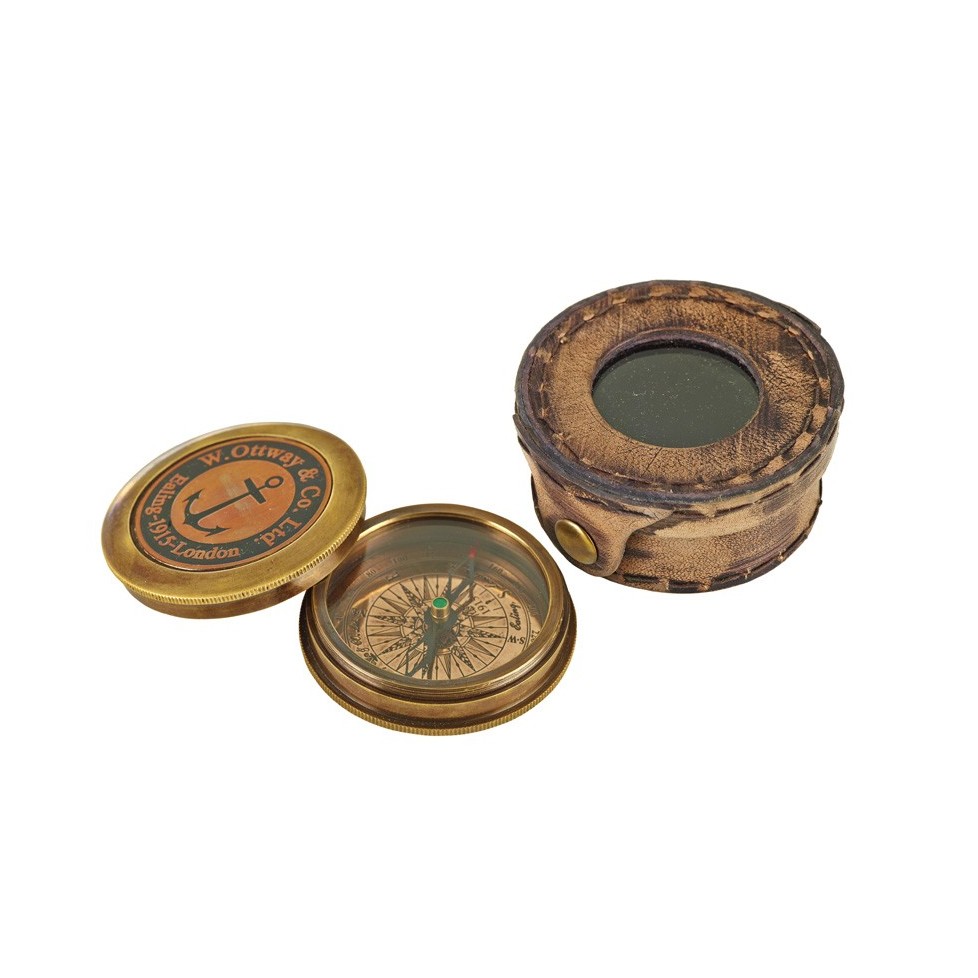

| Los pedidos realizados el día 25 de Julio, se procesarán el día 26 por fiesta local. |


Nautical compass. Reproduction of an aged compass in Antique brass. The lid is decorated with a charming anchor.
The compass (from the Latin "passus" ("step")) opened up the world to exploration and discovery. The principle of the magnetic needle was already known to the Chinese in the 3rd century BC and was first used by feng shui priests to tell them where and how to build. It was adapted to maritime navigation by Chinese sailors around the year 1000. The first compasses comprised a magnetic needle floating in a bowl of water, with the needle suspended on a thread or threaded through a reed. The Arabs perfected this by mounting the needle on a pivot. The compass arrived in Europe between the 10th and 11th centuries, enabling sailers to cross the oceans and explorers to discover the continents. The first instrument to resemble the modern compass is attributed to Portuguese citizen Ferrande (1483).
Nautical compass. Reproduction of an aged compass in Antique brass. The lid is decorated with a charming anchor.
Decoration 8-spoke ship's wheel with clock. Rosewood with 3-hand clock in brass.
Ship's bell in brass with lanyard. In the past this essential instrument was used to organise life on board by regulating the duty watches. It was also used as an alarm bell in thick fog and to mark celebrations.
The invention of the portable equinoctial sundial is attributed to Nicolas Rugendas, master watchmaker of German origin in 1620 and author of the oldest dial of the Augsburg type. The first portable equinoctial clocks appeared in southern Germany, during the reign of Charles V, at the beginning of the 16th century. They acquired their popularity only in...
This elegant IMEX Marine clock is made with chrome brass.
Brass sextant with an acacia wood box elegantly decorated with brass inlays.
Old brass compass with glass magnifier and rotating lid to protect the glass. Comes in an attractive blue velvet bag.